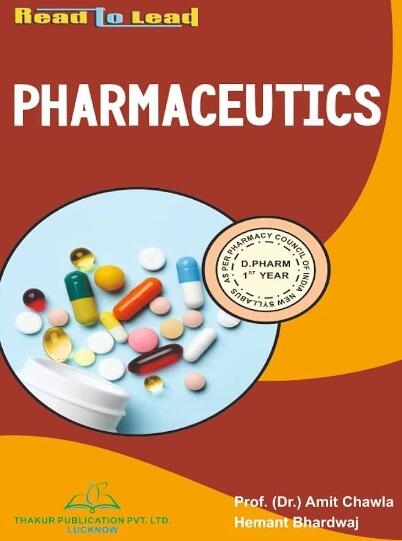Astodrimer Sodium Nasal Spray versus Placebo in Non-Hospitalised Patients with COVID-19: A Randomised, Double-Blinded, Placebo-Controlled Trial
IF 4.9
3区 医学
Q1 PHARMACOLOGY & PHARMACY
引用次数: 0
Abstract
Background/Objectives: Dendrimer-based astodrimer sodium nasal spray was assessed for its ability to reduce SARS-CoV-2 load in outpatients with COVID-19, which remains a severe illness for vulnerable groups. Methods: This was a randomised, double-blind, placebo-controlled clinical investigation evaluating the efficacy of astodrimer nasal spray in reducing SARS-CoV-2 viral burden in the nasopharynx of outpatients with COVID-19. Non-hospitalised adults with SARS-CoV-2 infection were randomised 1:1 to astodrimer or placebo four times daily from Day 1 to Day 7. Nasopharyngeal swabs for SARS-CoV-2 load determination were self-obtained daily from Day 1 to Day 8. The primary endpoint was an area under the curve of SARS-CoV-2 RNA copies/mL through Day 8 (vAUCd1–8). The primary analysis population was the modified intent-to-treat population (mITT: all randomised participants exposed to the study treatment who had at least one post-baseline viral load determination). Safety analyses included all randomised participants exposed to the study treatment. Study registration: ISRCTN70449927; Results: 231 participants were recruited between 9 January and 20 September 2023. The safety population comprised 109 and 113 participants randomised to astodrimer and placebo, respectively, with 96 and 101 participants in the mITT. Astodrimer sodium nasal spray reduced the SARS-CoV-2 burden (vAUCd1–8) vs. placebo in non-hospitalised COVID-19 patients aged 16 years and over (−1.2 log10 copies/mL × Day). The reduction in SARS-CoV-2 load was statistically significant in those aged 45 years and older (−3.7, p = 0.017) and the effect increased in older age groups, including in those aged 65 years and older (−7.3, p = 0.005). Astodrimer sodium nasal spray increased the rate of viral clearance and helped alleviate some COVID-19 symptoms, especially loss of sense of smell. Overall, 31 participants (14%) had ≥1 adverse event (AE). Four AEs were deemed possibly related to treatment. Most AEs were of mild severity and occurred at similar rates in both treatment arms. Conclusions: Astodrimer nasal spray reduces viral burden and accelerates viral clearance, especially in older populations, and is well tolerated.针对 COVID-19 非住院患者的 Astodrimer Sodium 鼻腔喷雾剂与安慰剂对比研究:随机、双盲、安慰剂对照试验
背景/目的:评估了基于树枝状聚合物的 astodrimer 钠鼻腔喷雾剂减少 COVID-19 门诊患者 SARS-CoV-2 负荷的能力,COVID-19 对弱势群体来说仍是一种严重疾病。研究方法这是一项随机、双盲、安慰剂对照临床研究,评估 astodrimer 鼻腔喷雾剂对减少 COVID-19 门诊患者鼻咽部 SARS-CoV-2 病毒负荷的疗效。非住院成人 SARS-CoV-2 感染者按 1:1 的比例随机接受 astodrimer 或安慰剂治疗,从第 1 天到第 7 天,每天四次。从第 1 天到第 8 天,每天自行采集鼻咽拭子以测定 SARS-CoV-2 感染量。主要终点是第 8 天的 SARS-CoV-2 RNA 拷贝数/毫升的曲线下面积(vAUCd1-8)。主要分析人群为修改后的意向治疗人群(mITT:所有接受研究治疗的随机参与者,至少进行过一次基线后病毒载量测定)。安全性分析包括所有接受研究治疗的随机参与者。研究注册:ISRCTN70449927;结果:在 2023 年 1 月 9 日至 9 月 20 日期间招募了 231 名参与者。安全人群中分别有109和113名参与者随机接受了阿斯妥曲默和安慰剂治疗,其中96和101名参与者接受了mITT治疗。与安慰剂相比,Astodrimer 钠鼻喷雾剂可降低 16 岁及以上非住院 COVID-19 患者的 SARS-CoV-2 负担(vAUCd1-8)(-1.2 log10 copies/mL × Day)。在 45 岁及以上人群中,SARS-CoV-2 负荷的降低具有显著的统计学意义(-3.7,p = 0.017),而在年龄较大的人群中,包括 65 岁及以上人群(-7.3,p = 0.005),效果则有所增加。Astodrimer 钠鼻腔喷雾剂提高了病毒清除率,并有助于缓解 COVID-19 的一些症状,尤其是嗅觉丧失。总体而言,31 名参与者(14%)出现了≥1 次不良事件 (AE)。4例不良事件被认为可能与治疗有关。大多数不良事件的严重程度较轻,两种治疗方法的发生率相似。结论Astodrimer 鼻腔喷雾剂可减少病毒负荷并加速病毒清除,尤其是在老年人群中,而且耐受性良好。
本文章由计算机程序翻译,如有差异,请以英文原文为准。
求助全文
约1分钟内获得全文
求助全文
来源期刊

Pharmaceutics
Pharmacology, Toxicology and Pharmaceutics-Pharmaceutical Science
CiteScore
7.90
自引率
11.10%
发文量
2379
审稿时长
16.41 days
期刊介绍:
Pharmaceutics (ISSN 1999-4923) is an open access journal which provides an advanced forum for the science and technology of pharmaceutics and biopharmaceutics. It publishes reviews, regular research papers, communications, and short notes. Covered topics include pharmacokinetics, toxicokinetics, pharmacodynamics, pharmacogenetics and pharmacogenomics, and pharmaceutical formulation. Our aim is to encourage scientists to publish their experimental and theoretical details in as much detail as possible. There is no restriction on the length of the papers. The full experimental details must be provided so that the results can be reproduced.
 求助内容:
求助内容: 应助结果提醒方式:
应助结果提醒方式:


